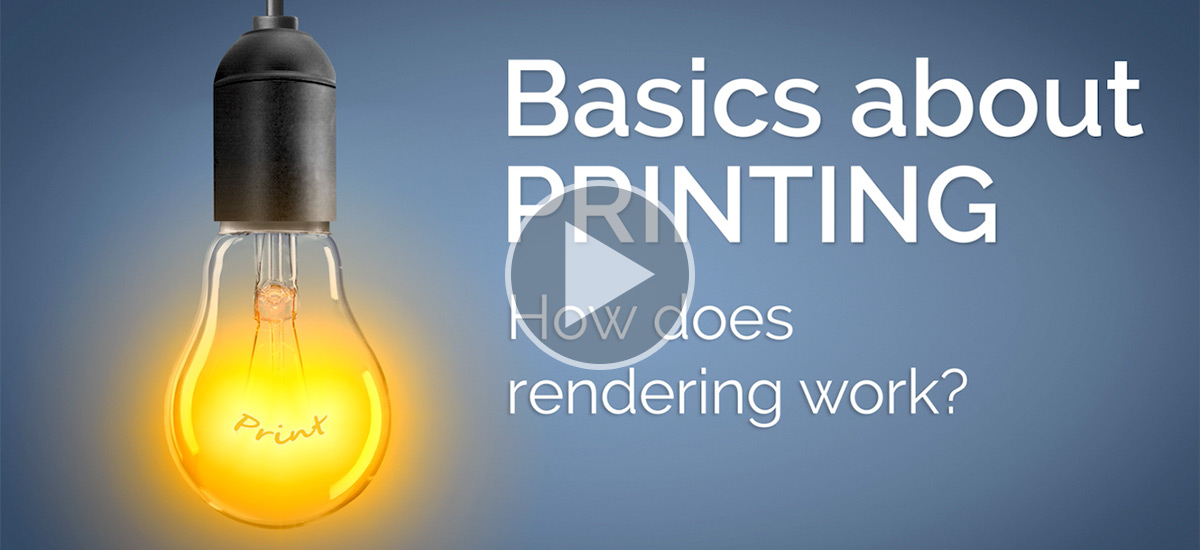How Does Rendering Work? – ThinPrint Tutorials

In this video, you get to know EMF and XPS better as well as the whole rendering process in the Windows print system.
With any printing job, rendering the document is essential. Our instructional video, ‘Basics about printing: How does rendering work?’ explains this process fully and in a way that makes it easy to understand. Watch it to discover more or read below.
When prepping and rendering is taking place within a Windows environment, it is necessary to take into consideration two data types. The first sort of data type is called Graphic Device Interface (GDI) and is used with Win 32 apps. This is the most commonly used data type nowadays. The second data type is known as XPS, which can be found in things like MS Office Suite or WinFX Runtime. Let’s deal with each data type in turn.
Apps using GDI Win 32
Applications can use the Windows GDI to translate what appears on the screen to something that will be rendered on paper. Users may print to EMF printer queues with GDI. The GDI creates an enhanced metafile, or EMF, something which the print queue can handle thanks to an EMF driver. A dynamic link library (DLL) for printer graphics then takes over. This is commonly supplied by the printer manufacturer rather than Windows and it undertakes all of the EMF rendering that is necessary for the printer in a suitable format.
GDI can also be used with XPS printer queues by applying a conversion path. If a GDI app is used with an XPS driver, then usually Microsoft’s own XPS converter will do the conversion work. After this stage, the print job moves on to the printer queue just as before. However, this time the rendering takes place with a Print Filter Pipeline Manager. It is within this piece of software that the codes for the manufacturer’s printer drivers are integrated.
Apps using XPS Win 32
Applications can also print directly to printer queues with XPS drivers without the need for a conversion path. However, if this type of app is used in conjunction with an EMF printer queue, then the XPS must be converted to an EMF for the rendering to work properly.
Which Data Type?
Although both data types can work with either sort of print queue, conversion paths can take a lot of processing power. Rendering of small print jobs is not usually problematic, but large ones can take a great deal of time to convert. Therefore, it is best to use a GDI with an EMF driver and XPS with an XPS driver.
Also take a look at our other base print video tutorials How to set up printer for a network, Are Print Servers Still Needed or Spooling and Print Spooler: This is how it works.




